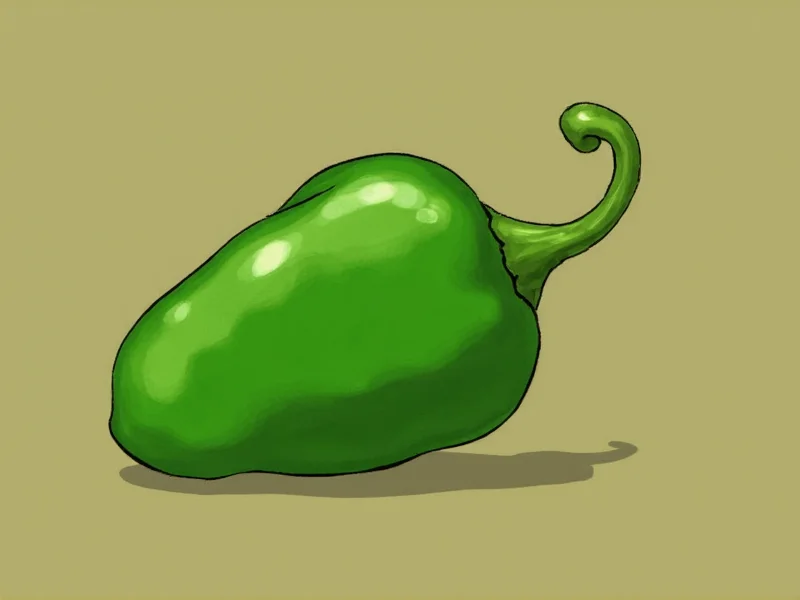Understanding exactly how much scoville units does a jalapeno have requires examining both the measurement system and the natural variability of these popular peppers. The Scoville scale, developed by pharmacist Wilbur Scoville in 1912, measures the concentration of capsaicinoids—the compounds responsible for chili pepper heat. While many people search for a single definitive number, the reality involves a range due to several biological and environmental factors.
The Science Behind Jalapeño Heat Measurement
Modern laboratories now use high-performance liquid chromatography (HPLC) to precisely measure capsaicinoid content, then convert these measurements to Scoville Heat Units. This scientific approach has replaced Scoville's original subjective human taste test method, providing more accurate and consistent results for jalapeno pepper heat level measurement.
Why Jalapeños Have a Heat Range, Not a Fixed Number
Several factors contribute to the variability in how hot is a jalapeno on the scoville scale:
- Growing conditions: Soil composition, water availability, and sunlight exposure significantly impact heat levels
- Plant stress: Peppers often become hotter when the plant experiences mild stress
- Ripeness: Red jalapeños (fully ripe) typically measure higher on the Scoville scale than green ones
- Genetic variation: Different jalapeño cultivars naturally produce varying heat levels
- Part of the pepper: Seeds and inner membranes contain the highest concentration of capsaicin
Comparing Jalapeño Heat to Other Common Peppers
| Pepper Type | Scoville Heat Units (SHU) | Relative Heat Level |
|---|---|---|
| Bell Pepper | 0 SHU | Mild |
| Jalapeño | 2,500–8,000 SHU | Mild to Medium |
| Serrano | 10,000–23,000 SHU | Medium to Hot |
| Cayenne | 30,000–50,000 SHU | Hot |
| Habanero | 100,000–350,000 SHU | Very Hot |
Practical Implications for Cooks and Consumers
When working with jalapeños, understanding their average scoville units for fresh jalapenos helps in recipe planning. Most people can comfortably consume jalapeños within their standard range without significant discomfort. For those sensitive to spice, removing the seeds and white membranes can reduce the heat level by up to 80%, as these parts contain the highest concentration of capsaicin.
Interestingly, the same jalapeño plant can produce peppers with different heat levels throughout the growing season. This natural variation explains why you might find some jalapeños noticeably hotter than others even from the same grocery store batch—a key point for anyone wondering why do jalapeno heat levels vary.
Measuring Heat in Home Settings
While professional labs provide the most accurate factors that affect jalapeno scoville rating, home gardeners can make reasonable assessments through careful tasting. Start with a small piece of the pepper's tip, wait 30 seconds, then gradually increase the amount if needed. Remember that individual tolerance to capsaicin varies significantly based on genetics and previous exposure.
Commercial Considerations
Food manufacturers who use jalapeños in products must account for this natural variability. Many commercial producers now work with growers to select specific cultivars and growing conditions that produce more consistent heat levels. This consistency matters for products like jalapeño poppers, salsas, and hot sauces where consumers expect a predictable mild jalapeno vs hot jalapeno scoville units experience.
Historical Context of Jalapeño Cultivation
Originating in Mexico and named after the city of Jalapa, these peppers have been cultivated for thousands of years. The modern jalapeño's position on the Scoville scale represents a careful balance—hot enough to provide distinctive flavor but mild enough for widespread culinary use. This balance explains their global popularity and why understanding comparing jalapeno heat to other chili peppers helps contextualize their place in the chili pepper family.
What is the average Scoville rating for a standard jalapeño pepper?
The average Scoville rating for a standard jalapeño pepper falls between 2,500 and 8,000 Scoville Heat Units. Most commercially available jalapeños measure around 5,000 SHU, placing them firmly in the mild to medium heat category compared to other chili peppers.
Why does the Scoville range for jalapeños vary so much?
Jalapeño heat levels vary due to multiple factors including growing conditions (soil, water, sunlight), plant stress, ripeness (red jalapeños are typically hotter than green), genetic variation between cultivars, and which part of the pepper you consume. The seeds and inner membranes contain the highest concentration of capsaicin, the compound that creates heat.
How does a jalapeño's heat compare to other common peppers?
Jalapeños (2,500-8,000 SHU) are significantly milder than habaneros (100,000-350,000 SHU) and cayenne peppers (30,000-50,000 SHU), but noticeably hotter than bell peppers (0 SHU). They're about 2-3 times hotter than poblanos but 2-3 times milder than serrano peppers, making them a versatile choice for those who want some heat without overwhelming spice.
Can you predict how hot a jalapeño will be by looking at it?
While not perfectly reliable, certain visual cues can indicate potential heat level. Look for more pronounced striations (white lines or 'corking') on the pepper's surface, which often indicates higher heat. Red jalapeños (fully ripe) typically measure higher on the Scoville scale than green ones. Thinner-walled peppers also tend to be hotter than thicker-walled varieties.
Does cooking affect a jalapeño's Scoville rating?
Cooking doesn't change the actual Scoville rating (capsaicin content), but it does affect how we perceive the heat. Heat can cause capsaicin to distribute more evenly throughout a dish, potentially making the overall experience seem hotter. Conversely, some cooking methods like roasting can caramelize sugars that balance the heat, creating a different flavor profile while the actual Scoville measurement remains unchanged.











 浙公网安备
33010002000092号
浙公网安备
33010002000092号 浙B2-20120091-4
浙B2-20120091-4